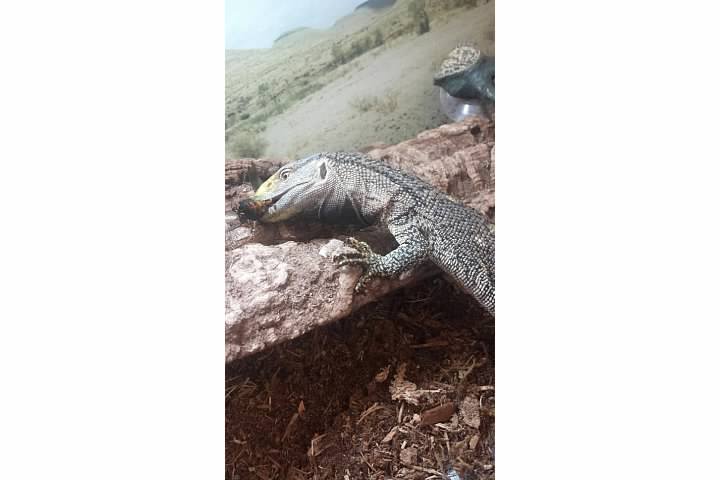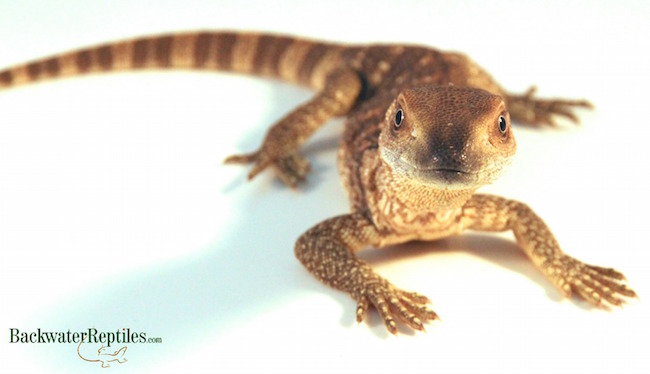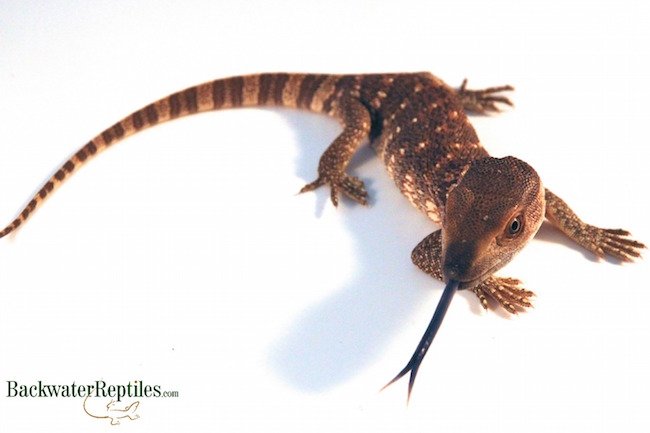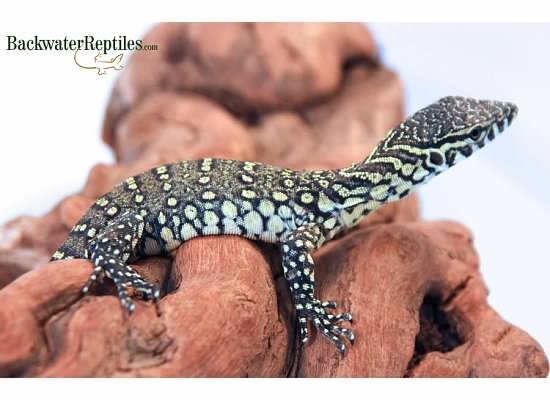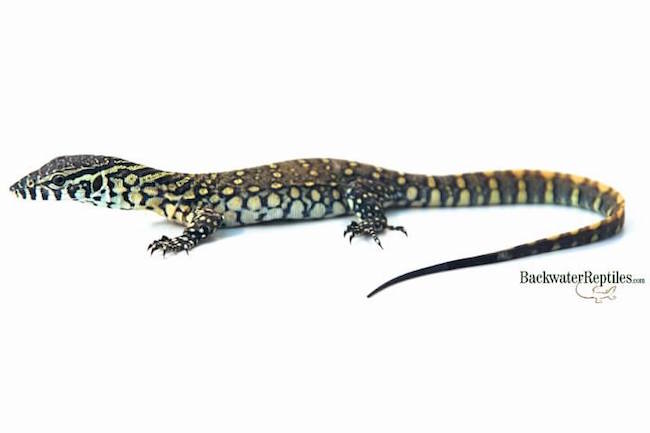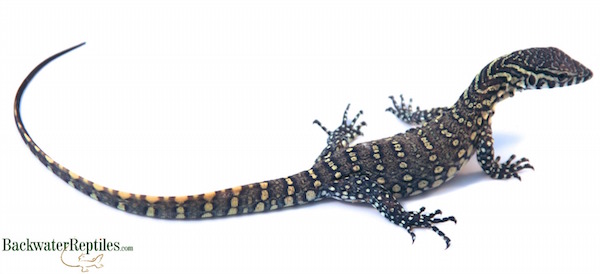What are the biggest pet lizards in the world? We aim to answer that question in the below article, based upon our experience with some of the largest reptiles in the world.
Big pet lizards are not for everyone, just like big pet dogs are not for everyone. It takes a specific personality and certain commitments in order to care for such a large pet, whether it’s a mammal or a reptile.
In this article, we’ll list the best biggest pet lizards sold at Backwater Reptiles as well as why we think they make great pets for the right people.
The Biggest Pet Lizards
Green Iguana (Iguana iguana)
Green iguanas are probably the most common large lizard sold at Backwater Reptiles. They are very recognizable with their large dewlaps, spiky spines, and brilliant green coloration.
Most people will purchase their green iguana as a hatchling and raise it to adulthood. We recommend this process as it gives your iguana time to get used to you. Many hatchling iguanas can be flighty, so the more time your pet iguana has to acclimate to you, the better.

Iguanas are the only true herbivores on this list. They will thrive on a diet of leafy greens, fruit, and small amounts of protein. We recommend chopped squash, kale, spinach, collard greens, and carrots. Fruit in moderation is also acceptable – apples, strawberries, and blueberries are all examples of fruit that iguanas are known to enjoy. You can also give your iguana small amounts of protein, but keep this to a minimum as it can cause renal damage in large amounts.
Savannah Monitor (Varanus exanthematicus)
No list of the biggest pet lizards would be complete without mentioning monitors. Although it’s not the biggest species of monitor lizard, we do think Savannah monitors are one of the best choices as far as pet monitor lizards are concerned.
Hatchlings are only a few inches long, but mature Savannahs will usually grow to be around three feet long, give or take, and live anywhere between fifteen to twenty years. This makes them moderately-sized monitors that are more suited to living a domestic life with human beings as companions than some of their larger monitor cousins.

The minimum size cage we recommend for an adult Savannah is six feet long by four feet tall. If you keep a breeding pair, you should have a slightly larger enclosure.
Savannahs are carnivores and very voracious eaters with no lack of appetite. Hatchlings should be fed a diet of various insects that are gut-loaded and vitamin dusted.
Once they are larger, we’ve found that ground turkey or other lean meat mixed with raw egg and vitamin powder is an appropriate staple diet. It’s also just fine to feed rodents, but because they are prone to obesity, we recommend keeping the rodents to a minimum.
Their cousins, the Blackthroat monitors, are even larger and can become wonderful pet lizards if you’ve got the space.
Argentine Black and White Tegu (Tupinambis merianae)
With proper husbandry and care, an Argentine black and white tegu can grow to be four and a half feet long. Males are considerably larger both in terms of length and body mass. Most females won’t surpass three feet long.
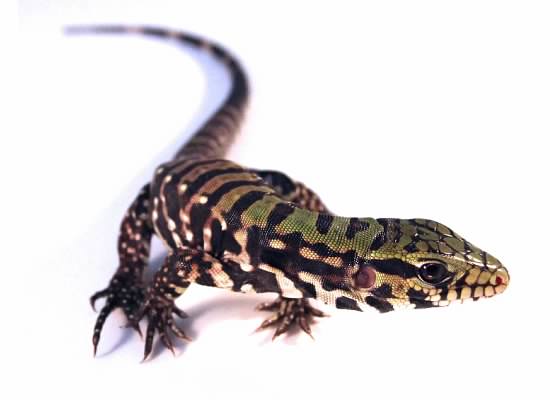
When they are babies, Argentine black and white tegus have emerald green heads and upper torsos, but after several sheds, this green color fades away. At maturity, they are black and white with beaded markings.
Although they require lots of room to roam, Argentine black and white tegus are popular pets because they are highly intelligent. Many people liken them to dogs or cats because they can be house-trained and will become very docile with regular human interaction.
Parson’s Chameleon (Calumma parsonii)
Compared to the other lizards on this list, the Parson’s chameleon is actually relatively small. However, when compared with other chameleons, the Parson’s is a giant! Rather than calling it one of the biggest pet lizards, it’s probably more accurate to say “easily the most massive chameleon in the world.”
We also want to say that although Parson’s chameleons are the smallest of the lizards on this list, that doesn’t mean they are the easiest to care for. In fact, we might say that the opposite is true.
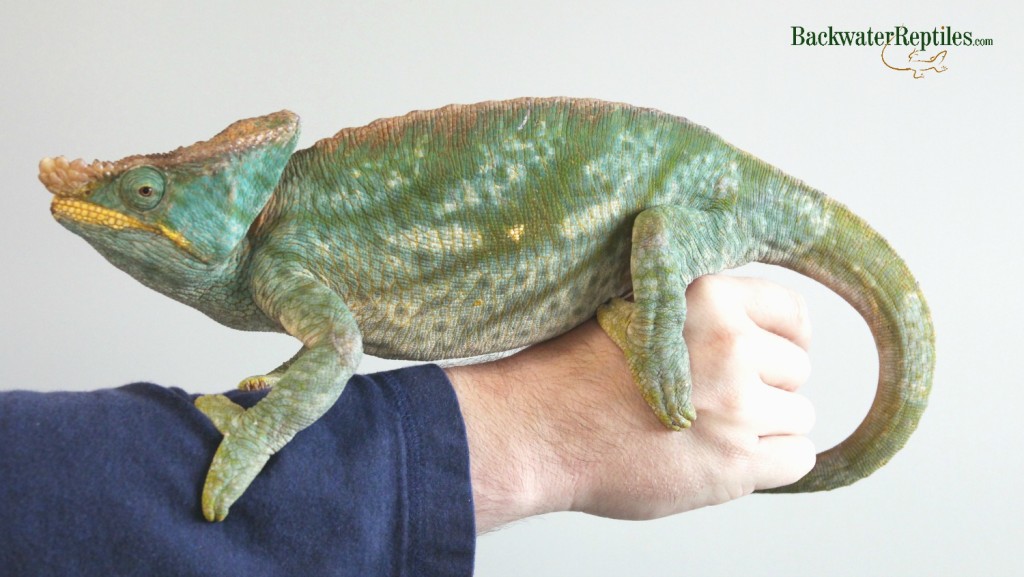
Parson’s chameleons might require less space to thrive, but the other conditions required to keep them happy and healthy are tougher to maintain. Like nearly all chameleon species, Parson’s are finicky. They can be tough to feed and if their natural environment is not replicated well enough, they can easily become ill.
If you are interested in a pet Parson’s chameleon, we highly recommend that you research the animal extensively and make sure that you can provide proper lighting, plant life, humidity and water, and a balanced diet.
Conclusion: The biggest pet lizards
Sure, big lizards aren’t for everyone. It takes someone who has the available space and time to devote to such a large pet reptile.
If you think you’re ready to take on one of these large lizards, Backwater Reptiles sells green iguanas, Argentine black and white tegus, Savannah monitors, and Parson’s chameleons.


